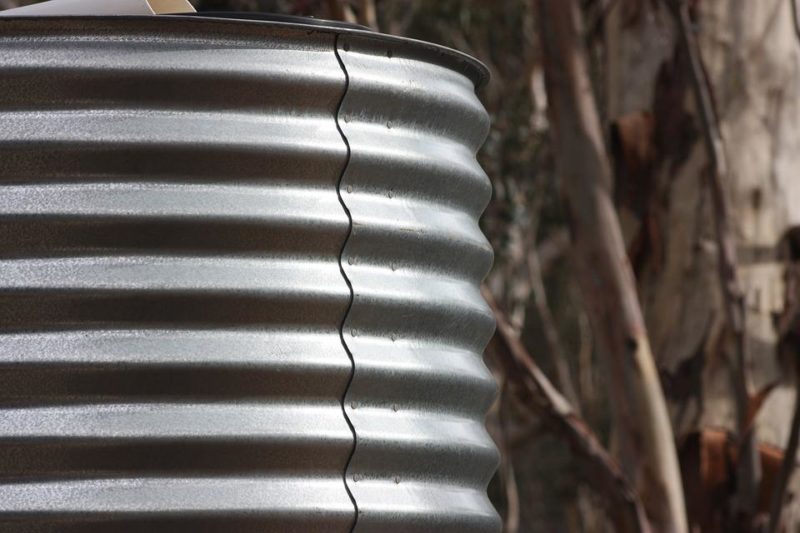The question is: why is water leaking from the bottom of my water heater? It could be due to several causes like drain valve leakage, pressure relief valve leakage, tank leakage, and condensation.
But then, the first place you need to check is if the leakage is underneath the water heater, particularly the pressure and temperature relief valve and drain valve.
The leakage is above the device and runs down in the heater’s body before it finally escapes the lower level. Search for the possible signs relevant to leakage above the water heater, including all pipes that continue to the heater. Moreover, remove the electric models’ access panels as you check for insulation moisture. Let us discuss more on this below. Keep reading!
Why Is Water Leaking From The Bottom Of Your Water Heater?
Below are reasons why is water leaking from the bottom of my water heater.
#1. Pressure relief valve leakage
The T&P valve is a significant safety measure in a device that relieves excess pressure once it gets boiling. The valve is present above the unit with a tube attached, channeling water to a floor. The moment the leakage occurs, the problem is at the tank’s bottom with an overflow tube discarding expelled water below it. Moreover, the T&P valve allows the water to release in the tank, so monitor the thermostat setting, ensuring you do not turn it up that much. Nevertheless, replace the valve with a more acceptable temperature.
#2. Tank leakage
Sediments accumulate inside the tank when you don’t clean the water heater. Chemicals and salt can result in corrosion or premature rusting in the water heater, causing further pinhole leaks. The water pressure in the tank forces the opening after the pinhole leak, thus, causing leakage over time. The solution is the tank replacement in a new unit where tank leaking is one obvious problem.
The help of a professional is essential when you seek to replace the water heater, but as a DIYer, opt to do it yourself. In other models, remove the plumb lines in the device and get the power disconnected in the access panel. Next is to turn the gas line off in a gas water heater, continue further with the device, and disconnect the cable upon entering the tank. Reconnect the power and pipes after replacing a new water heater with an old one.
#3. Drain valve leakage
The drain is located underneath the unit to empty the tank during routine cleaning. The drain valve leakage is best identified with water dripping or moisture, whether around the drain valve or drain opening. Make sure to check the underneath valve as it fully closes; thus, turn the control clockwise. Also, check if you have entirely shut the underneath valve upon turning it clockwise.
After doing this, replace the valve if it still doesn’t solve the issue. Get a valve replacement for a water heater in hardware stores which you can return using a wrench. After that, turn the previous valve in a counter-clockwise position, thus removing it. Wrap the drain valve replaced with a joint compound or Teflon tape, and screw another one into an opening until you keep it tight. Tighten it half in turn and use a wrench, or until you tighten the drain in place. You may also be interested to know how to replace a leaking water heater drain valve.
#4. Condensation
Water tank condensation is most often experienced in a water heater, also commonly observed in old water heaters. Nonetheless, it can occur in a newer tank once damage occurs in the insulation or thermostat. Let the tank sit idle for several hours after turning the gas or power off. Once the leakage stops, condensation is one indication often experienced.
So, turn the thermostat down while waiting for the unit power to be restored. Next is to replace the tank using an insulated model once the problem occurs again. See the list of water heaters recommended to see how protected the current models are. Condensation often occurs temporarily after water heater installation, and cold water fills up inside the tank and has not heated up. The difference in temperature inside and outside the tank often causes condensation.
Ways To Prevent Water Leaking In The Water Heater Bottom
Below are ways to prevent water from leaking into the water heater’s bottom:
- Drain the unit to avoid cracks and rust in the metallic and steel inner tank components.
- Check for possible build-ups in the tank as you unscrew its anode rod. Replace it if you notice severe build-up.
- Drain the water heater by placing an empty bucket underneath the valve. Get a hose and attach it to a valve directly.
- Pay attention to the water pressure and tank temperature to avoid water heater leakage underneath. The tank temperature and water pressure are where the tank depends as it wears and tears. Pay much attention to these factors to best determine the lifespan.
It’s A Wrap!
Now you learn why is water leaking from the bottom of my water heater, so pay attention to condensation, drain valve leakage, pressure relief valve leakage, and tank leakage. Follow the ways mentioned to prevent water leakage in the water heater bottom! You may also want to read about how to tell if water heater is gas or electric and how to install a gas hot water heater.

